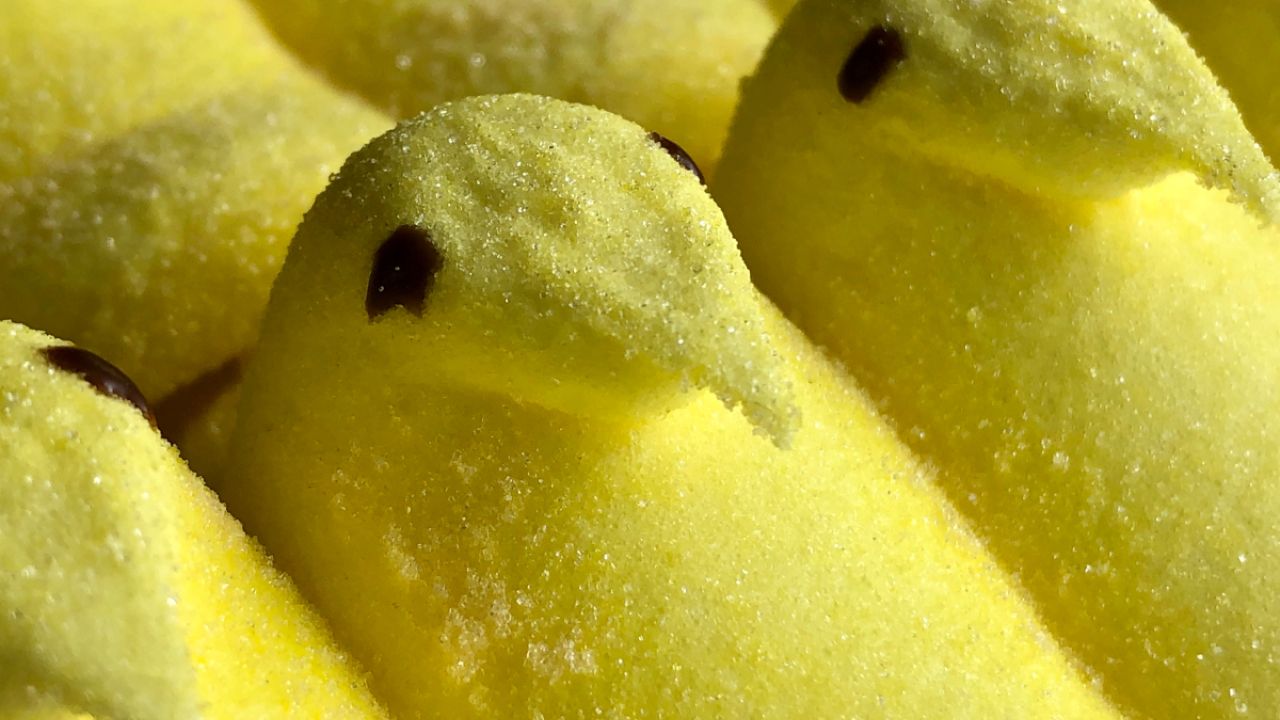
Spring holidays are almost here and stores are flush with popular Easter- and Passover-themed sweets, but beware, some candies often contain chemicals that can harm your health.
Dyes and other ingredients in brands like Peeps Marshmallow Chicks and Streit’s Mini Fruit Slices, found in many groceries and drug stores, have been linked to health problems, including behavioral difficulties in children, damage to DNA and even cancer.
The Food and Drug Administration should be doing more to keep these chemicals of concern out of sweet treats that children and adults alike enjoy. In the absence of federal action, states are considering bans on certain food chemicals. EWG is co-sponsoring a first-in-the-nation bill in California that would bar five toxic chemicals, including red dye No. 3 and titanium dioxide, from food sold in the state. But in the meantime, it’s a good idea to learn about what may be in your spring candy and how to avoid it.
Artificial food dyes
A particularly troubling artificial food dye is red dye No. 3. It can be found in common Easter candies like Peeps Decorated Eggs Marshmallow, Brach’s Candy, Jelly Bird Eggs and even the dyes used to decorate Easter eggs, like McCormick Assorted Food Colors and Egg Dye. It’s also in the popular Passover candy Streit's Jordan Almonds.
Studies have shown that red dye No. 3 causes cancer in animals and, like several other food dyes, has been associated with adverse behavioral changes in children.
Another concerning food dye, yellow dye No. 5, is used to color Peeps Marshmallow Chicks. Some children may be especially sensitive to artificial dyes and show behavioral difficulties, such as reduced attentiveness, after exposures as low as 1 milligram.
Titanium dioxide
Another harmful additive frequently used in Easter and Passover candies is titanium dioxide, which enhances color.
Delectables like Skittles Original Easter Candy Impossible Egg Hunt, Passover Assorted Jelly Fruit Slices, Streit’s Apple Honey Fruit Slices and Galerie Happy Easter Dispenser With Candy Pieces all contain this food chemical.
In 2021, the European Food Safety Authority labeled titanium dioxide “no longer safe” for human consumption, citing concerns about its ability to damage DNA, based on a review of hundreds of scientific studies.
Heavy metals
Prefer chocolate for your spring candy treat? Consumer Reports in a recent study tested 28 different chocolate bars and found the harmful heavy metals lead and cadmium in dark chocolate bars from brands like Dove and Hershey’s.
To reduce your exposure, Consumer Reports suggests choosing dark chocolates with lower levels of heavy metals, and thinking of chocolate as an occasional treat.
How can I avoid these harmful ingredients?
It can be challenging to navigate and keep track of harmful food chemicals. When you shop, check food labels and avoid artificial colors and other food additives whenever possible. You can also consult EWG’s Food Scores database to find candy without these chemicals.
Choosing packaged foods that are certified organic will help you avoid the potential health harms associated with artificial food dyes and titanium dioxide. They must meet strong standards that protect consumers from exposure to potentially harmful food additives.



